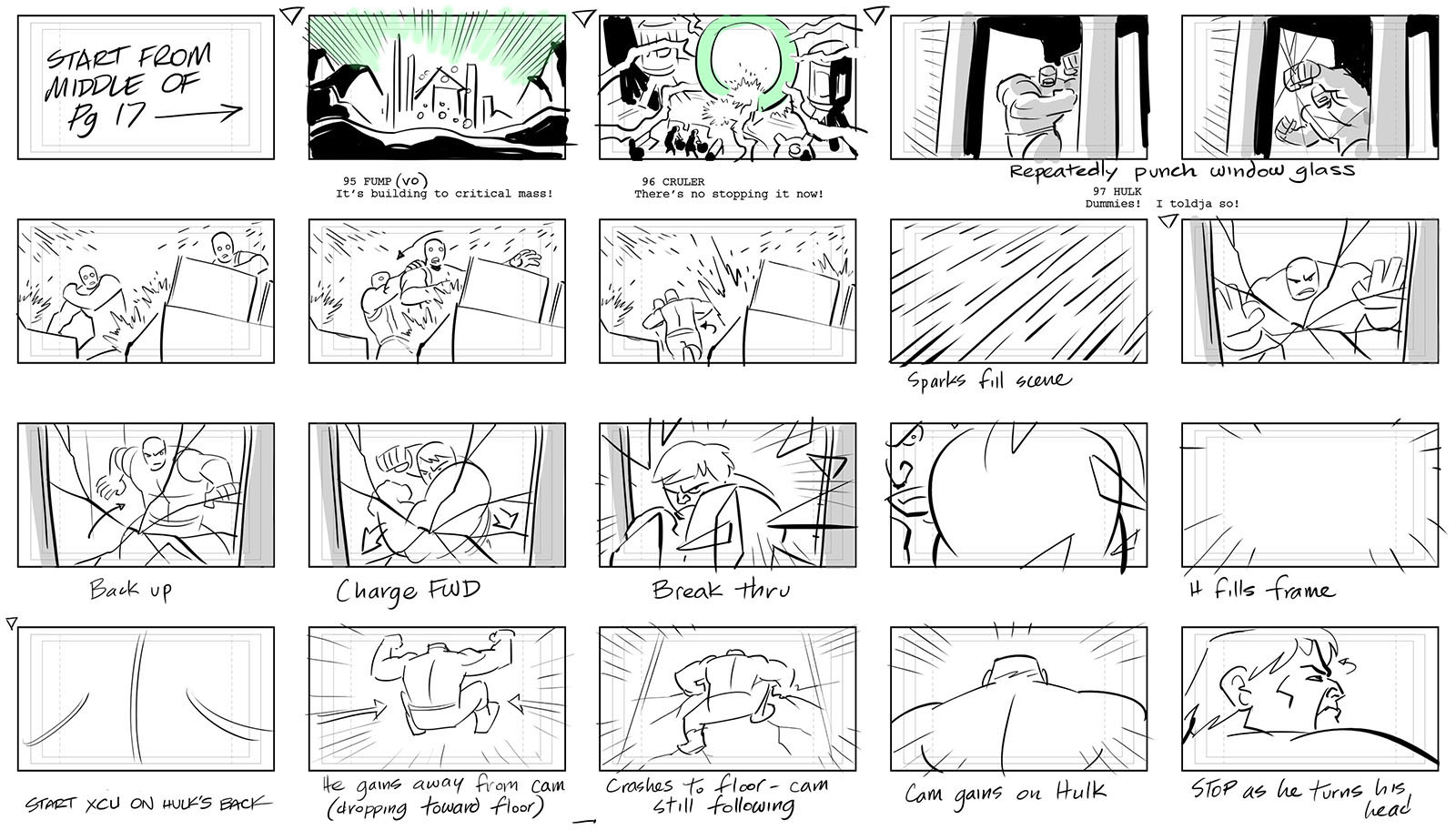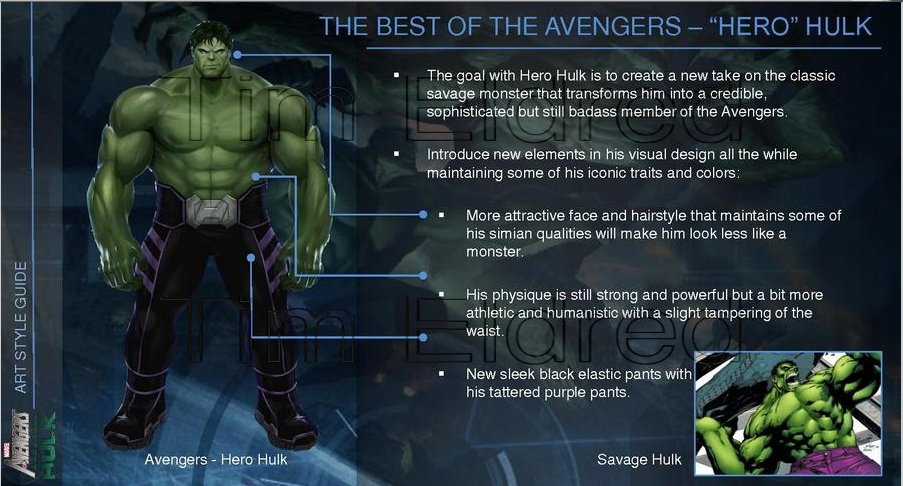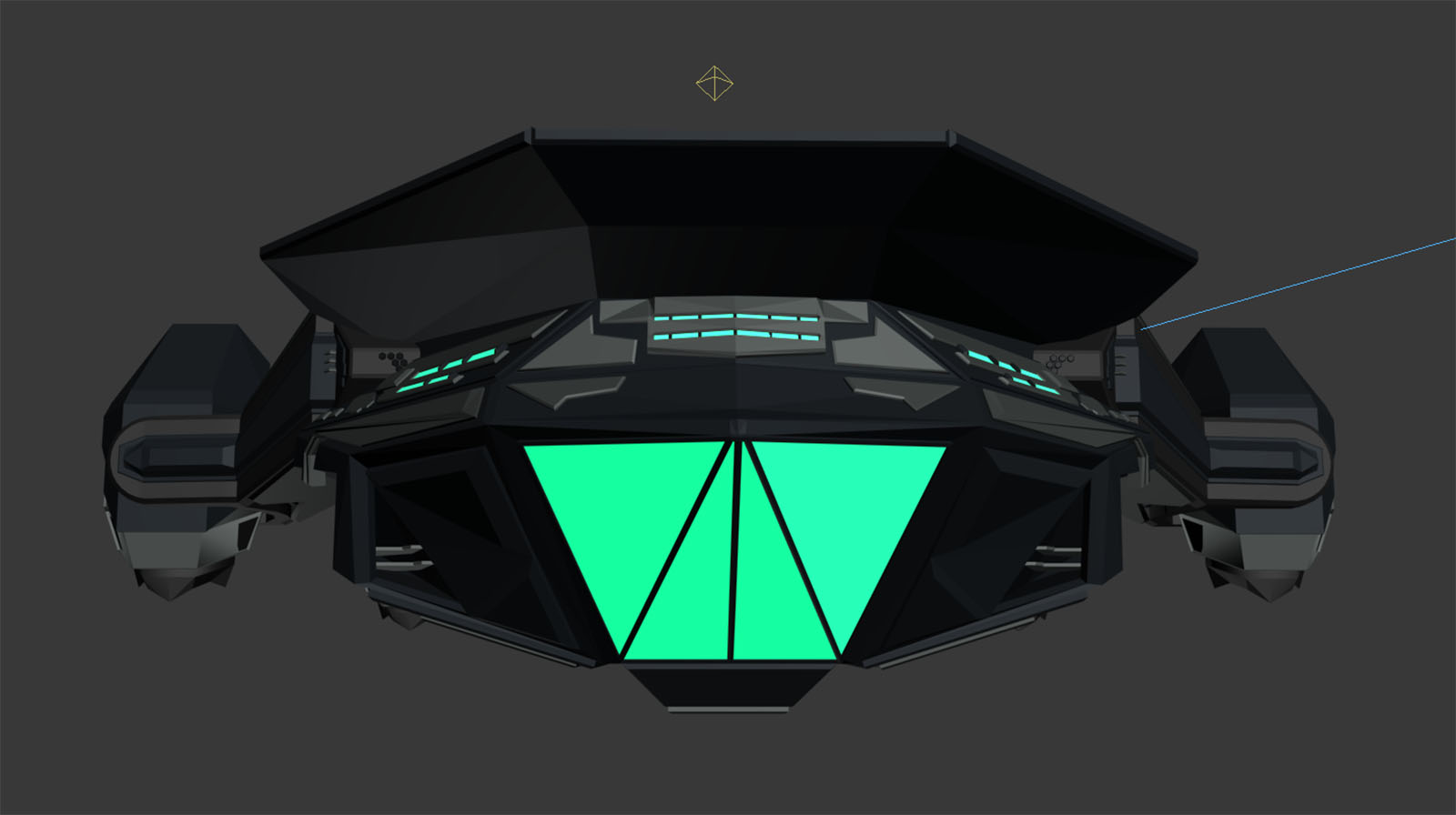Iron Man/Hulk: Heroes United, 2013
As a preteen in the second half of the 70s, my jam was Marvel comics. From the mid-80s onward, not so much. But the period I tapped into turned out to be just the right one to absorb the parameters of the Marvel universe and record them in my head for the animation career that was waiting for me as an adult. I found myself in exactly the right place when the 2002 Spider-Man movie launched a new age of Marvel films and cartoons, and it served me well. (See the results here.)
From then onward, Marvel projects became a steady drumbeat with two Spider shows, Wolverine and the X-Men, an Ultimates video, and Earth’s Mightiest Heroes to storyboard until everything came to a head in late 2011. That was the year my longtime associate Eric Radomski hired me to draw storyboards for Ultimate Spider-Man. I’d worked for him steadily since 2003 on Xiaolin Showdown, Scooby-Doo and Shaggy, and a few other things, and he was always happy to have me on his team. This relationship was about to get even stronger; at the end of that year, he pulled me and fellow colleague Jeff Allen aside to tell us that he’d just been made the Exec Producer for the new Marvel Animation Studio (MAS), and he wanted us both to join him as directors on an Avengers series.
Check the timing; this was in sync with Phase 1 of the MCU, and the first Avengers movie was on its way. We would be making the TV series that tied into it. But that exciting prospect still lay in the future by about six months. I needed something to keep me busy in the interim, and Eric had just the thing: a direct-to-video project called Iron Man/Hulk: Heroes United.
It was to be a “longform” direct-to-video project, meaning the running length would fall somewhere between a couple TV episodes and a feature film. (In this case, 71 minutes.) It would be animated in CG, which was not a challenge for me at all. I’d racked up plenty of experience by this time and knew where the fences were.
The pitch: Hulk’s pulverizing brute strength and Tony Stark’s high-tech brainpower come together to face off against the ultimate enemy. When “Zzzaxx,” a seemingly invincible, energy-devouring monster threatens to destroy the planet, Marvel’s unlikeliest pairing of Avengers is mankind’s only hope. Alone, neither can defeat the awesome power of Zzzax. As a duo, they just might have a chance — if they can find a way to work together without smashing heads before time runs out!
I officially came on board in early April 2012 with a storyboard deadline of June 29 (after which I would start directing episodes of Avengers Assemble season 1). The script ran 76 pages, and I estimated I could handle 60 in the given time. The remainder would go to Jeff Allen and the director, Leo Riley. Ordinarily, I would submit all my work to the director for revision notes, but Eric trusted me enough to let me steer my own ship. Rather than directing the storyboard, Leo would direct the animation that followed it.
(In my estimation, that made ME the director of the sequences I boarded. When you’re deciding what the camera sees and how the characters perform, you are the de facto director. That doesn’t quite line up with how credits are assigned, but the checks still clear.)
Unsurprisingly, it was an experiment in finding the biggest bang for the fewest possible bucks. Most of the assets (our fancy name for CG models) had been designed and built for Ultimate Spider-Man, and could be reused like Lego bricks. (We’d end up reusing them a TON on Avengers as well.) The characters had already been built for some video game or other (I don’t know which one), and could be repurposed here. I liked the part where I didn’t have to wait for a whole bunch of new assets to be built. My bank account was the lowest it had been in a decade, and I was overjoyed to have ANY work, let alone something that reawakened my inner Marvelite.
Presented here is the material that became the blueprint for the finished film: my complete storyboards and the animatics that were built from them. (In the animatics, you’ll also see the boards by Jeff and Leo that completed the story.) Since this was to be a CG project, the boards could be simpler than usual, more like a cartoon than a comic book. It’s great when you get the luxury to clean up storyboards and make them all shiny, but it’s also a lot of fun to draw quickly and be spontaneous. You can capture a lot of energy that might otherwise get flattened out by detail. When that energy successfully transfers to the finished product, you got yourself a Marvel movie.
Iron Man/Hulk: Heroes United was released on DVD and Blu-ray December 3, 2013. It can be seen on Disney Plus, Apple TV, VUDU, iTunes, and Amazon Prime. Or on Youtube here.
RELATED LINKS: Trailer | Review | Marvel Database | Wikipedia page
OPENING SEQUENCE: Part A | Part B | Part C
Part 1 Storyboards
Part 1 Animatic
Part 2 Storyboards
Part 2 Animatic
Part 3 Storyboards
Part 3 Animatic
Part 4 Storyboards
Part 4 Animatic
Part 5 Storyboards
Part 5 Animatic
Production Archive





























